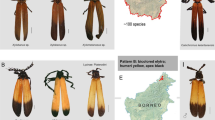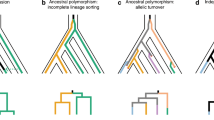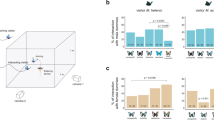Abstract
DR. RICHARD R GOLDSCHMIDT has discussed the origin of miltery in a paper entitled ‘Mimic Polymomlrasm, a Controversial Chapter of Darwinism (Quart. Rev. Biol., 20; June pt., 194 ff As he rightly says, most naturalists accept the facts of mimicry. He returns to the theory of production of a mimetic resemblance by saltations, but the discussion, being mainly on the genetical basis, ignores the fact that mimicry is essentially a phenomenon of life, and that far-reaching conclusions drawn from the study of the colour and pattern of a few dried butterflies do not cope with a vast number of cases among other creatures. Indeed, he remarks that in view of conflicting evidence as to habits, etc., of mimetic butterflies, it is better to mark this group of doubtful adaptations as non liquet. Were Goldschmidt more familiar with at least the records of field entomology, he would have found very many observations from naturalists of experience who have been deceived against their better judgment. The resemblance of an ant-like spider to its model is notorious for the part played by special movements and attitude, both foreign to the generality of spiders. The deceptive resemblance of longicorn beetles to Hymenopterous models (Braconidse) is so great that experienced collectors have recorded their inability to distinguish them in flight. A black fossorial wasp in tropical America has the habit, while very actively running about on the ground, of vigorously flicking its wings. This characteristic is copied by two other insects far removed in relationship, a Reduviid (Hemiptera) and a Tettigoniid grasshopper which, agreeing in their wholly black coloration with the wasp, have the same habit, completely foreign to their congeners. Quite recently I was told by a leading Brazilian naturalist of how he was warned by an entomological companion not to touch a certain black insect as it stung very badly: the insect was the mimetic grasshopper.
This is a preview of subscription content, access via your institution
Access options
Subscribe to this journal
Receive 51 print issues and online access
$199.00 per year
only $3.90 per issue
Buy this article
- Purchase on Springer Link
- Instant access to full article PDF
Prices may be subject to local taxes which are calculated during checkout
Similar content being viewed by others
Author information
Authors and Affiliations
Rights and permissions
About this article
Cite this article
HALE CARPENTER, G. Mimetic Polymorphism. Nature 158, 277–279 (1946). https://doi.org/10.1038/158277a0
Issue Date:
DOI: https://doi.org/10.1038/158277a0
Comments
By submitting a comment you agree to abide by our Terms and Community Guidelines. If you find something abusive or that does not comply with our terms or guidelines please flag it as inappropriate.



